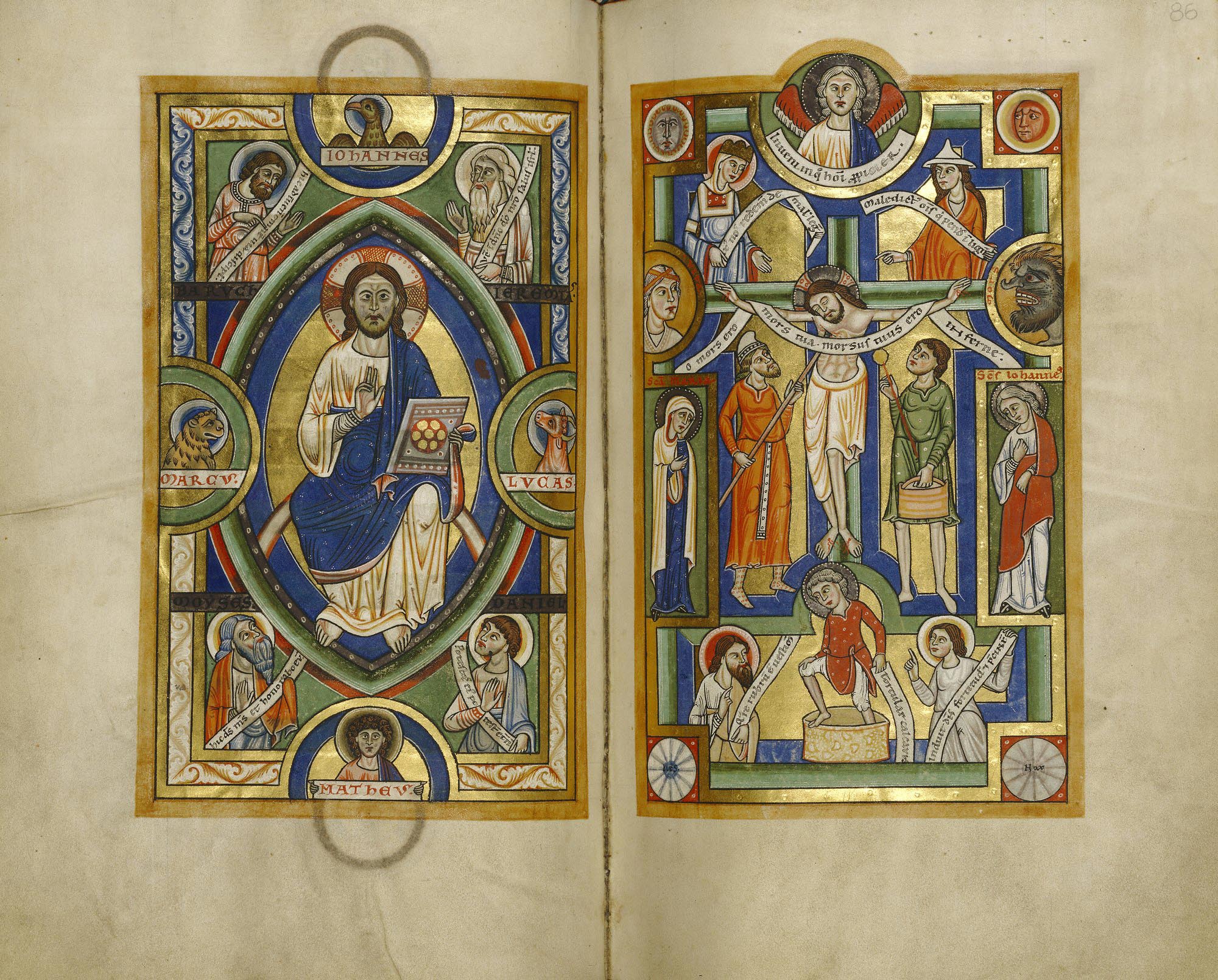To some, a title like “In the Beginning Was the Word: Medieval Gospel Illumination” evokes ideas antithetical to modernity: tradition, religion and non-reproducibility. A new J. Paul Getty Museum exhibition of this name, however, suggests that a familiarity with the past is needed to contextualize the present.
“In the Beginning Was the Word: Medieval Gospel Illumination” includes vividly detailed illuminated manuscripts dating from the ninth to 17th centuries, which depict the life of Jesus Christ as told in the four Christian gospels of Matthew, Mark, Luke and John. These men, who were called “evangelists” because they were tasked with spreading the teachings of Jesus, were understood to convey the literal word of God.
“The gospel book was the most important kind of manuscript during the Middle Ages,” said Kristen Collins, associate curator of manuscripts at the J. Paul Getty Museum and curator of the exhibition.
While the collection mainly consists of Western works, the museum also secured rarer pieces from Armenia, Byzantium and Ethiopia. According to Collins, viewers are able to visually collate works of different origins and see how, in spite of cultural nuances, the manuscripts adhere to a certain standard of similarity.
“Despite the far-flung geography, the tradition of illuminating these books was fairly stable,” Collins said. “There were usually four author portraits (of the evangelists) and canon tables of concordance (which showed where stories appeared in the gospels) embellished with architectural designs.”
Many of the illuminated manuscripts were considered among the highest forms of art objects during medieval times, Collins said. She also said they were usually created specifically for the church in which they were viewed and functioned as a point of pride and cultural capital for the institution.
“When I look at these objects, I think about how inundated with images we are today. In the Middle Ages, they were laboriously copied by hand, painted by hand and, really, were part of a visual culture much more unique (than ours),” Collins said.
According to Collins, in addition to the sacred quality of these manuscripts, certain material conditions add further value to the books. While today, the notion of color may strike few people as a potentially costly decoration, hundreds of years ago, the use of certain colors could immediately connote wealth, Collins said.
“(Back then) if you had a certain kind of blue, it meant you were grinding up a gem stone,” Collins said.
In this case, Collins was referring to lapis lazuli, little dishes of which the museum is displaying along with a case of other stones, powders and tools used to burnish gold.
While the production of manuscripts originated in monasteries ““ where monks acted as both scribes and artists ““ the profession later became more secularized, according to Collins. In some ways, the perceived sacredness of the manuscripts served as a built-in guarantee for their preservation.
“Many of these books glow with the intensity they had the day they were painted,” Collins said. “These books lived most of their lives in dark places. … There are stories of libraries burning and books being tossed from the windows to save them.”
In terms of painting, art from the Middle Ages is represented at the museum almost exclusively by manuscripts, which often contain the best preserved elements of medieval painting, according to Elizabeth Morrison, curator of manuscripts at the J. Paul Getty Museum. While medieval frescoes, for example, are often obscured by dirt or candle wax, manuscripts survived in the best condition because they were portable and closed most of the time.
Because objects in the museum’s manuscript collection are incredibly sensitive to light, there is no permanent installation for them; however, portions of the collection are almost continually on view in a rotating show, Collins said.
These illuminations seem to lie at the unusual intersection of history, religion and art; the attempt to describe their importance without recognizing this crucial overlap may alienate some viewers, particularly those not of the Christian faith.
Still, Collins said she believes the exhibition possesses the aesthetic strength to appeal to visitors who simply enjoy stunning works of art.
“Even if you’re not interested in the cultural history, these books are simply knockout beautiful,” Collins said. “The two Ethiopian books contain strikingly powerful images. … They have an almost abstract geometric approach to the human figure that makes you think of (Pablo) Picasso. So even for the modernist, there is something in this show.”
